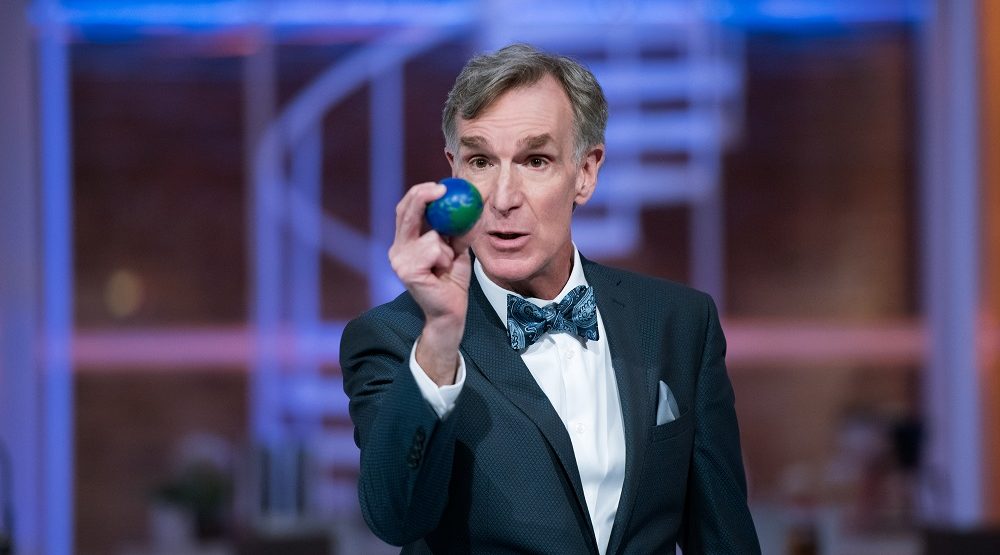For years, Disney has been keeping 80% of the revenue from older shows that it distributes to streaming platforms, leaving only 20% to be available to stars and other profit participants.
It does so by classifying the revenue as “home video.” Under a formula dating from the introduction of the VCR, Disney subtracts an 80% royalty to its in-house distributor to cover the costs of distribution.
In 2017, Bill Nye, star of “Bill Nye the Science Guy,” challenged that practice, calling it yet another example of Hollywood accounting.
In a lawsuit in Los Angeles Superior Court, Nye argued that the actual distribution costs for platforms like Netflix and Amazon Prime are minimal, and that Disney is essentially raking millions of dollars off the top without justification.
But earlier this month, a judge sided with Disney. Judge David Cowan ruled that Nye’s 1993 contract allows the studio to continue to classify streaming and download revenue as “home video,” and to continue to take the 80% royalty. Nye’s attorney, Raymond Hamrick, said that he would appeal.
Unless the ruling is upheld on appeal, it does not establish a precedent that could be applied in other cases. But it still bothers attorneys who represent performers in profit participation lawsuits. They argue that Disney is simply grabbing whatever it can based on a tortured reading of contracts that predate the streaming era.
“They’re trying to stick it into the category that will allow them to keep the most amount of money while ignoring why they were entitled to get that to begin with,” said attorney Jeffrey Koncius, partner at Kiesel Law LLP.
“It doesn’t make any sense at all,” said Douglas Johnson, managing partner of Johnson & Johnson LLP. “Home video is not the same as streaming. They’re not even close.”
Johnson argued that all of the streaming and download revenue should be allocated to “gross receipts.” In his experience, that is how most studios — 75% to 80% — handle streaming and download revenue on older contracts.
At the time Nye signed his contract, streaming and digital downloads did not exist. But pay television — cable, HBO, Showtime, etc. — did exist, and typically offered a premium licensing fee. Johnson argued that streaming is more akin to pay TV than it is to distribution of physical DVDs and VHS tapes.
“This is a pretty draconian thing for studios to be doing to an artist,” Johnson said. “They know the big money is coming in from Netflix. To try to stick it into a home video license — they don’t have any justification.”
In Nye’s case, the profits were to be split 50-50 between Disney, on the one hand, and Nye and his producers on the other. Under Disney’s reading of the contract, then, 90% of streaming and download revenue stays with Disney. Only 10% is available, after costs are deducted, for the creators of the show.
At a court hearing in December, a Disney accountant testified that the studio has deducted the 80% royalty from streaming revenues ever since those revenues started to come in, around 2008 or 2009. Disney’s lawyers argued that from the viewer’s perspective, streaming is similar to home video and represents an evolution from the earlier technology.
Nye’s contract contains language that was standard at the time regarding revenue from “video devices.” Nye testified at the December hearing that he thought that referred only to a “plastic rectangular thing,” such as a VHS tape.
“Nye further testified that to consider a Video Device to be software would be ‘illogical’ at best because, among other things, the word ‘manufacture’ requires there to be a physical object and a digital file is not a physical object or manufactured device,” Hamrick wrote in a brief.
Cowan, the judge, wrote that Nye’s testimony was “credible.” But he held that Nye’s reading of the contract was “unreasonable” because it would mean that Disney would not be able to collect any distribution fee at all. He found it implausible that Disney would allow that to happen.
Johnson argued that the judge had failed to fully consider how cheap it is to distribute content to Netflix and other streaming platforms.
“It’s one hit of the button — it digitizes the content, you’re done,” Johnson said. “They don’t have any costs. This is a total windfall to the studio with no justification.”
He also argued that if the ruling stands, Disney’s accounting practice could be adopted across the industry.
“These streamers are paying those big first window license fees that are usually your largest gains on the title,” he said. “This should be a wakeup call to the artists and the people who make movies. This is outrageous.”


